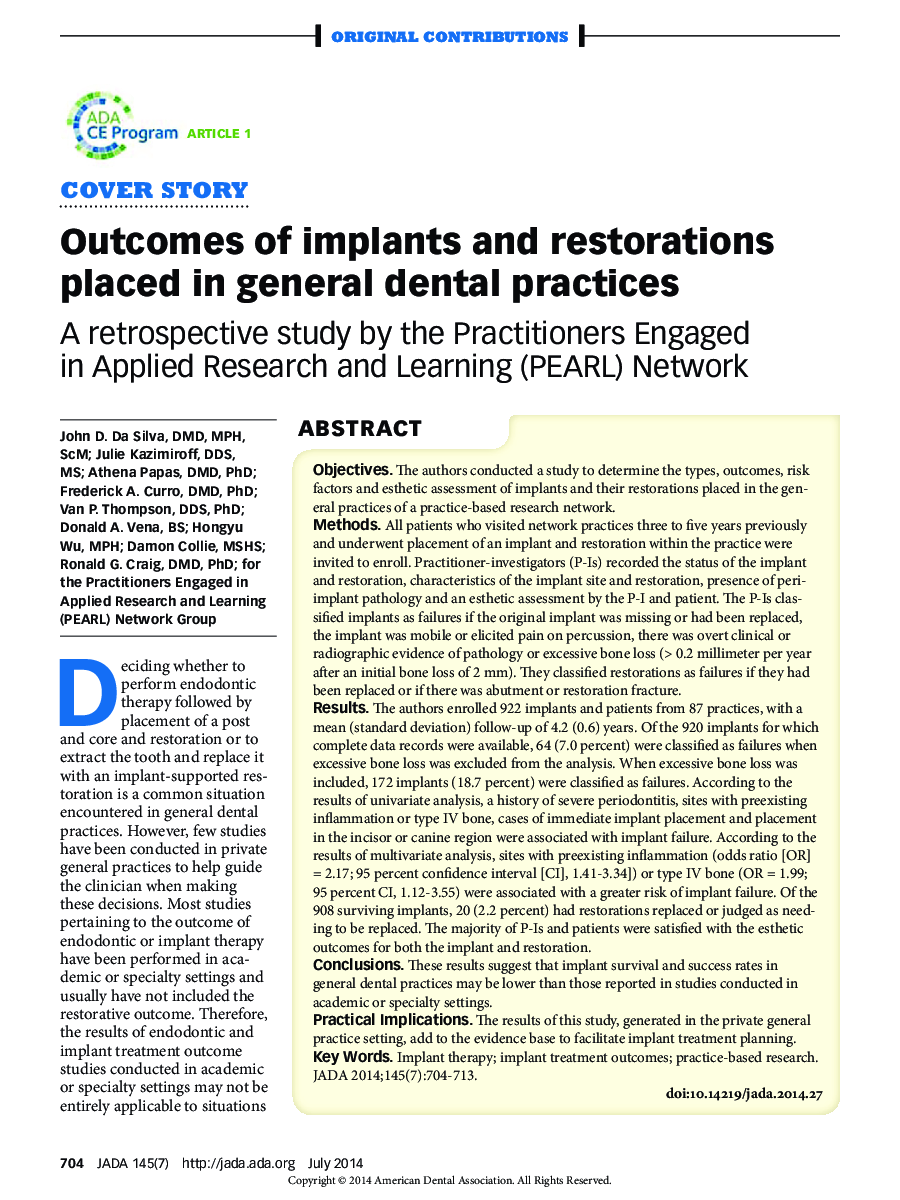| Article ID | Journal | Published Year | Pages | File Type |
|---|---|---|---|---|
| 3137004 | The Journal of the American Dental Association | 2014 | 10 Pages |
ABSTRACTObjectivesThe authors conducted a study to determine the types, outcomes, risk factors and esthetic assessment of implants and their restorations placed in the general practices of a practice-based research network.MethodsAll patients who visited network practices three to five years previously and underwent placement of an implant and restoration within the practice were invited to enroll. Practitioner-investigators (P-Is) recorded the status of the implant and restoration, characteristics of the implant site and restoration, presence of peri-implant pathology and an esthetic assessment by the P-I and patient. The P-Is classified implants as failures if the original implant was missing or had been replaced, the implant was mobile or elicited pain on percussion, there was overt clinical or radiographic evidence of pathology or excessive bone loss (> 0.2 millimeter per year after an initial bone loss of 2 mm). They classified restorations as failures if they had been replaced or if there was abutment or restoration fracture.ResultsThe authors enrolled 922 implants and patients from 87 practices, with a mean (standard deviation) follow-up of 4.2 (0.6) years. Of the 920 implants for which complete data records were available, 64 (7.0 percent) were classified as failures when excessive bone loss was excluded from the analysis. When excessive bone loss was included, 172 implants (18.7 percent) were classified as failures. According to the results of univariate analysis, a history of severe periodontitis, sites with preexisting inflammation or type IV bone, cases of immediate implant placement and placement in the incisor or canine region were associated with implant failure. According to the results of multivariate analysis, sites with preexisting inflammation (odds ratio [OR] = 2.17; 95 percent confidence interval [CI], 1.41-3.34]) or type IV bone (OR = 1.99; 95 percent CI, 1.12-3.55) were associated with a greater risk of implant failure. Of the 908 surviving implants, 20 (2.2 percent) had restorations replaced or judged as needing to be replaced. The majority of P-Is and patients were satisfied with the esthetic outcomes for both the implant and restoration.ConclusionsThese results suggest that implant survival and success rates in general dental practices may be lower than those reported in studies conducted in academic or specialty settings.Practical ImplicationsThe results of this study, generated in the private general practice setting, add to the evidence base to facilitate implant treatment planning.
